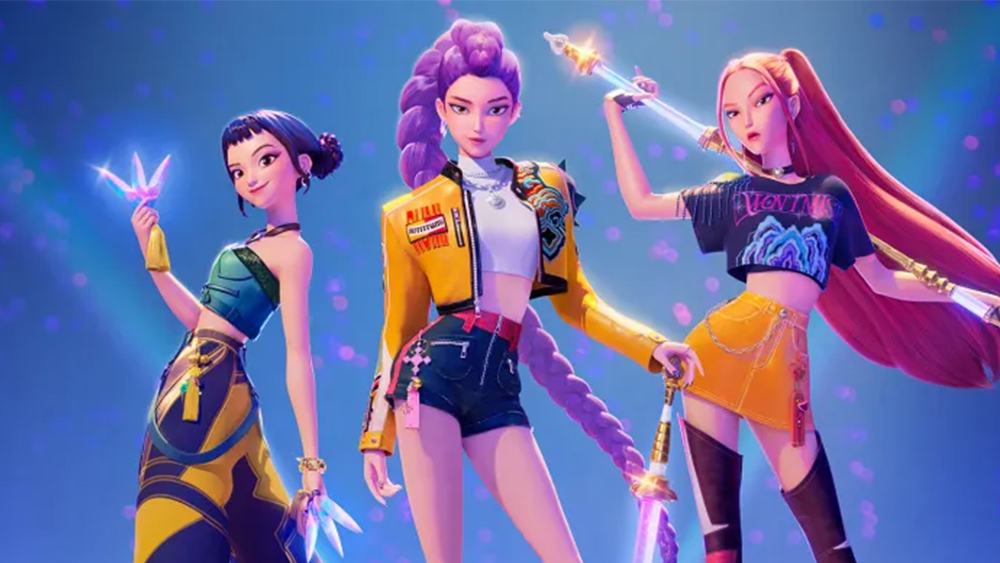The secrets behind Disney's latest Oscar-winning animation
Roy Conli and Andy Hendrickson explain how Big Hero 6 made it to the big screen.
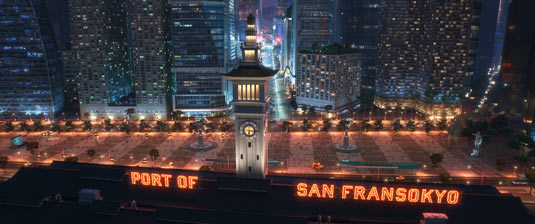
There's a shot early in Big Hero 6 which might make you wide-eyed with admiration. It shows San Fransokyo: a sprawling city of reflective surfaces and varied light sources – a cityscape created by a fusion of animation, production design and visual effects.
"From a visual standpoint, the first thing we want to create is a world," says Roy Conli, producer of Big Hero 6. "Co-director Don Hall was looking to live action for a cutting pattern and he wanted that heightened reality that you can get with animation." The images on display certainly place the viewer right at the centre of that ride.
Seeing the light
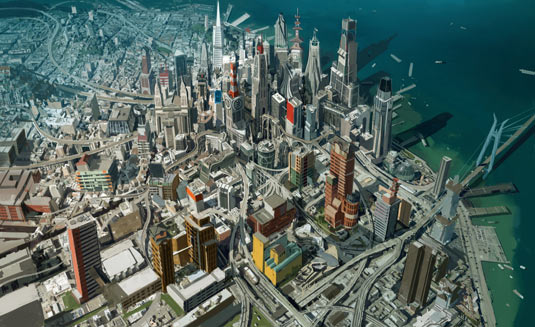
For this action-packed adventure the Disney team has faithfully replicated the quality of light around San Francisco's Bay Area, and in achieving this level of realism, the fantastical premise of the movie has a believable place to start from. "Animation is a distillation of reality. San Fransokyo is Tokyo laid over San Francisco," says Roy.
"The crew knew they needed to understand the light of San Francisco." Certainly, the play of light throughout the film, on the surfaces of buildings, on characters and on landscapes, is stunning. And to achieve this effect, the filmmakers deployed the new production renderer Hyperion as the next step in ray-traced global illumination.”
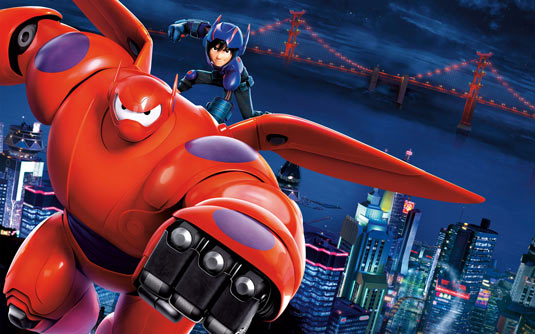
"In service of the story, we had to build the world: millions and millions of objects. We had to build the entire city – it is quite complete," says CTO Andy Hendrickson. "That level of geometry necessitates the technology of global illumination.
"We took a look at the landscape of the GI renders and we decided we needed a new approach. We asked 'How do we stream a scene through rendering?' " Dealing with these issues in turn prompted the development of what would eventually be new software Walt Disney Animation Studios (WDAS) would call Hyperion.
The challenge of the story created a reason to change our techniques
"The challenge of the story created a reason to change our techniques," says Andy. "That’s the crucible where Hyperion was born. We only started building this tool two years ago. It'll be used on all our future films."
Daily design news, reviews, how-tos and more, as picked by the editors.
Andy describes Hyperion software as a global illumination toolkit that "traces light energy through a scene". The renderer computes a way to organise the illusion of lightrays and to control what they do when those rays strike a surface.
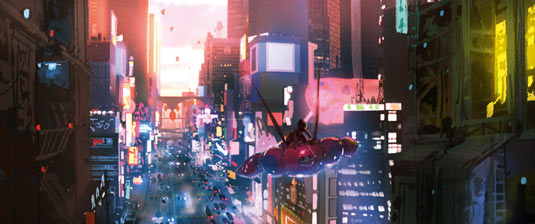
Hyperion, then, is the perfect solution to a film with a photorealistic aesthetic in which the environments are dense with geometry. The software collates all similar ray bounces together and only once these rays are organised does it then shade the ray hits.
Hyperion enabled the artists to put energy into scenes in more physically based ways, bringing the physics of the real world into the interaction of the tools. Andy describes Hyperion as the latest in a range of "artist-friendly toolkits" that WDAS has developed.
A focus on aesthetics
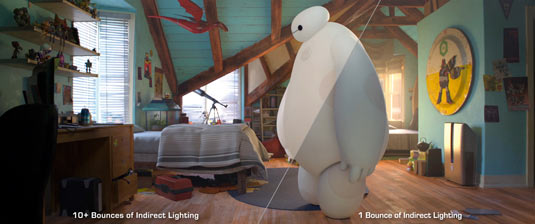
The newly developed tool undoubtedly helped production designer Paul Felix, one of the people tasked with creating the environments that gave context to the characters, and who Roy asserts is "a master of light".
There's a fantastically kinetic and moody night-time chase sequence through the streets of San Fransokyo that evokes a real sense of film history, notably of film noir and thrillers.

"When you have these more real ways of lighting you can explore the language of cinema," says Andy. For most scenes the team would rough out initial light positions (light emanating from street furniture, signs and so on) and then develop it from that initial design."
In rendering the nuances of light, Hyperion reduces time that would otherwise be spent by artists hand-tweaking such consistencies. Hyperion takes care of a lot of the drudgery to make a scene look plausible. "Our artists can then play with nuance," says Andy. "It's right that your folks focus on the artistry and not the maths or mechanics."
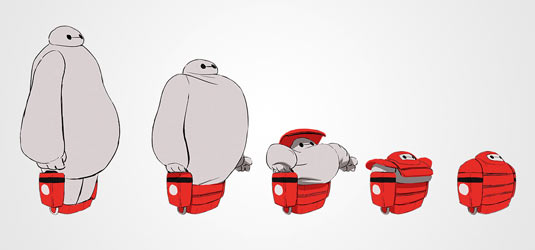
The future of animation toolsets is to bring more physical-world process into the work
A team of around 400 people worked on Big Hero 6 and key to the overall aesthetic of the movie has been the application of the conventions and sensibilities of live-action cinematography within the animated world. "We’re able to talk in terms of cinematography," says Andy.
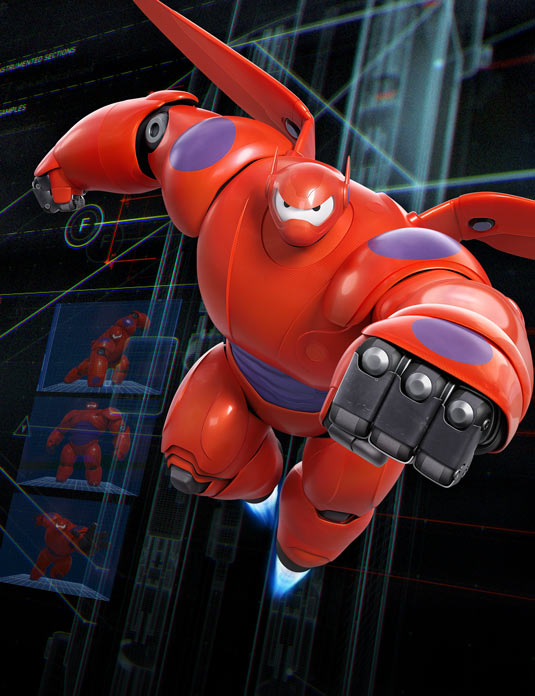
"It's very blurry now between animation and live action. The lighting, the specular dispersion are all faithful to reality. We did a lot of work with training and putting our crew on lighting classes."
"The first images we made in Hyperion were so compelling. Hyperion also allows us to park an image, review it and refine it."
Along with the new production renderer Hyperion, Big Hero 6 used the studio's newly developed Parade software which allowed for animation playback at 24fps. Parade works by analysing forwards and backwards around the frame being animated.
Characters and places
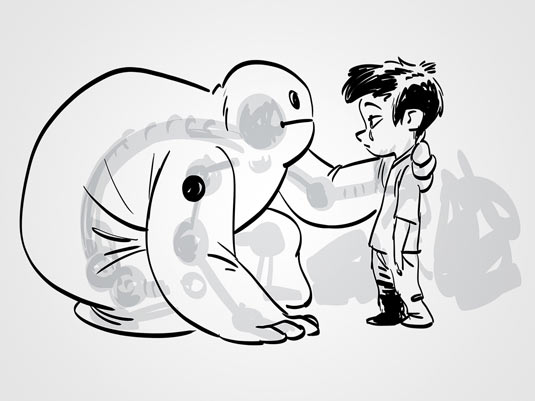
Veteran Disney animator Mark Henn guided the animation aesthetic on Big Hero 6. Roy says that Mark was there to make sure the team weren’t over-animating, and with the superhero character of Baymax, this was a vital. Baymax had to be simple.
"Animation works best in silence, in allowing an animated film to breathe," Roy explains. "For Baymax we focused on un-animation: the idea that a simple character allows the audience to read in an emotional state. By being as sparse as possible, the audience fills in the gaps."
Animation works best in silence, in allowing an animated film to breathe
Throughout the film the skyscrapers of San Fransokyo are particularly striking. They are used in dynamic car chases and as portals to other dimensions. To do the skyscrapers justice, the production team built a massive virtual skydome for the world.
Roy notes that you could combine the terabytes generated for Tangled, Wreck-It Ralph and Frozen and place them into the world of Big Hero 6 and still have room left over. At a more modest level, the film also astounds with its illusion of translucency. You have only to look at the scenes in which the adorable character Baymax features to see the skill.

Disney’s Big Hero 6 is out now.
Words: James Clarke
James Clarke is a writer and a director/scriptwriter/producer. This article first appeared in 3D World issue 192.
Like this? Try these
- Big Hero 6 to Guardians of the Galaxy: learn VFX from the masters
- The VFX secrets of 2015's Oscar contenders
- 5 new Disney movies that could be a bigger hit than Frozen

The Creative Bloq team is made up of a group of art and design enthusiasts, and has changed and evolved since Creative Bloq began back in 2012. The current website team consists of eight full-time members of staff: Editor Georgia Coggan, Deputy Editor Rosie Hilder, Ecommerce Editor Beren Neale, Senior News Editor Daniel Piper, Editor, Digital Art and 3D Ian Dean, Tech Reviews Editor Erlingur Einarsson, Ecommerce Writer Beth Nicholls and Staff Writer Natalie Fear, as well as a roster of freelancers from around the world. The ImagineFX magazine team also pitch in, ensuring that content from leading digital art publication ImagineFX is represented on Creative Bloq.
